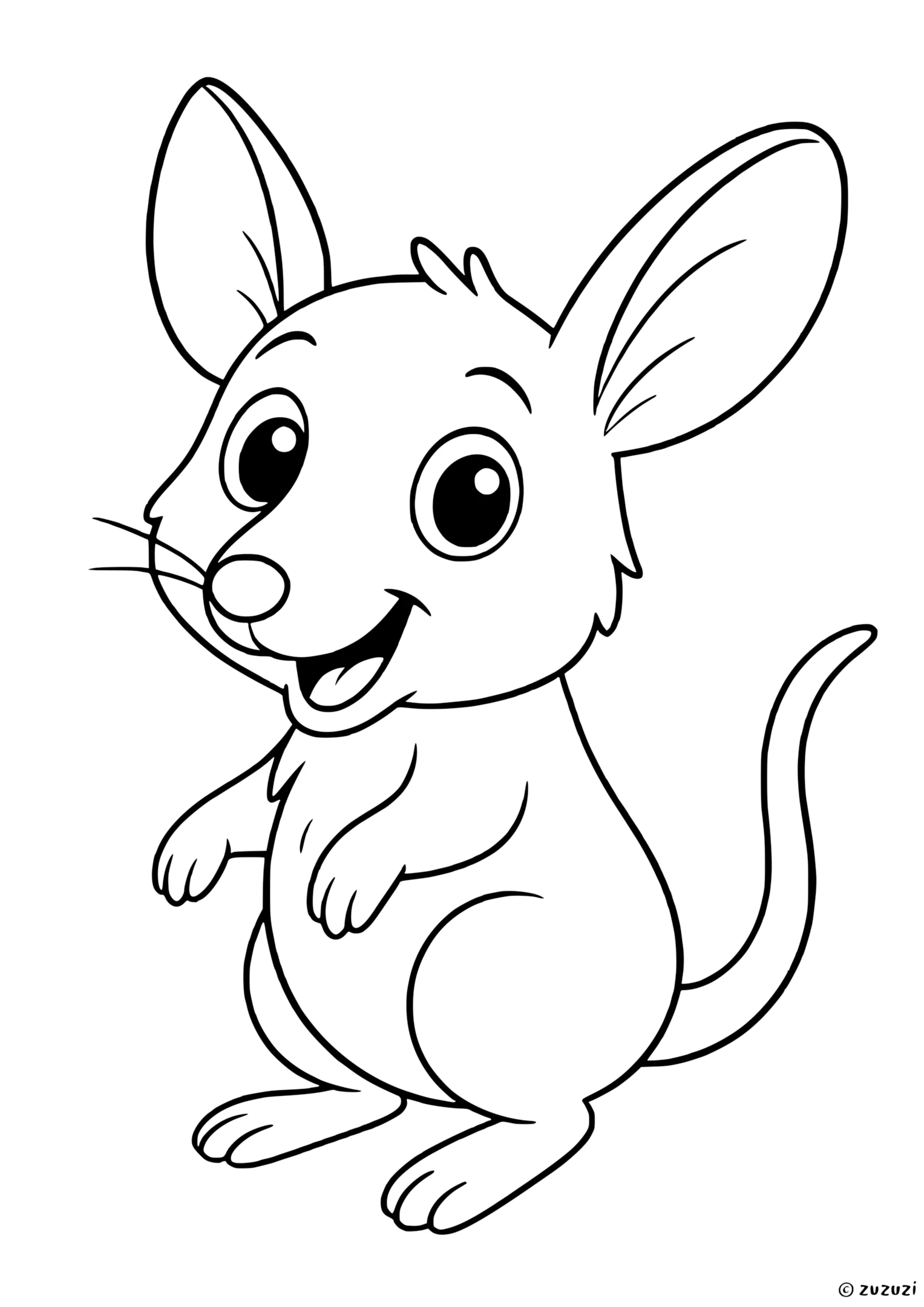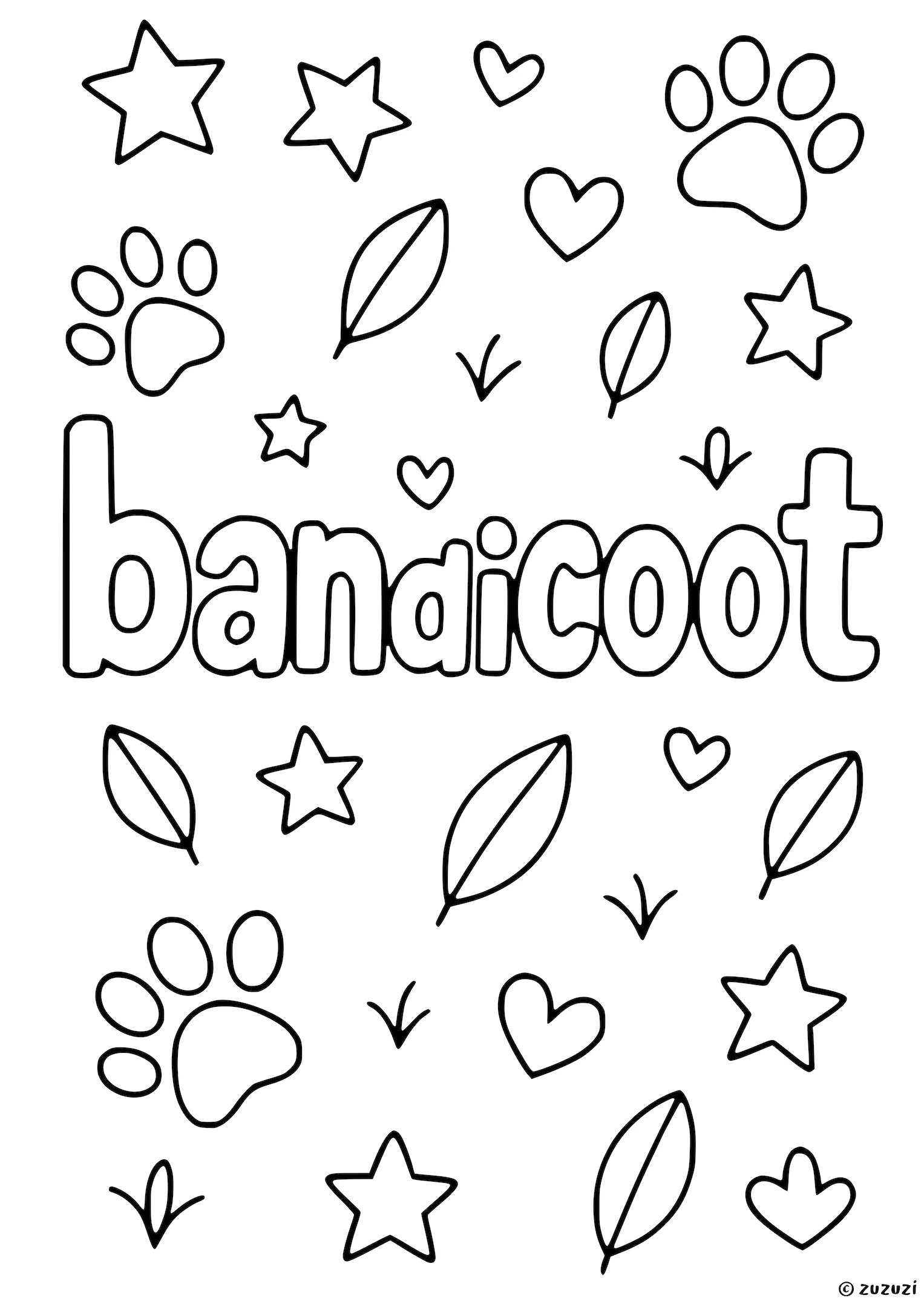Coloring ideas for Bandicoot
Bandicoots have soft, fluffy fur that ranges from sandy brown to gray, sometimes with little speckles or stripes across their backs. Their ears are usually a bit lighter in color, while their noses and paws can be a darker shade of brown or black. Their tails are long and often bare at the tip, so you can play with colors like tan, beige, or even orange-brown. For the nature backgrounds with trees and rivers, try using greens for grass, blues for water, and grays for the volcano rocks, then add a bright yellow sun to complete your scene!
You can even imagine a magical bandicoot in rainbow colors, glowing spots, or shiny golden fur. Let your creativity run wild!
On the back of the page, why not try writing some fun facts about the bandicoot, or its name in different languages? You could even give it a name of your own, or draw your own version using your imagination!
What is a Bandicoot?
A bandicoot is a small marsupial that lives mostly in Australia and New Guinea. Although they may look like a mix between a rabbit and a rat, they are their own special species with long pointed snouts and strong back legs that help them dig for food. Bandicoots usually weigh between 200 grams and 1.5 kilograms and can live up to 3 or 4 years in the wild. They have soft, furry bodies and short front paws that are perfect for scratching at the ground in search of worms, insects, and roots. You might hear soft snuffling or rustling when they move through the underbrush at night, because bandicoots are nocturnal animals that like to explore after dark. They build hidden nests out of leaves and grass and prefer forests, woodlands, and even grassy backyards to call home.
How to say Bandicoot in different languages?
- English: Bandicoot
- French: Bandicoot
- Spanish: Bandicut
- Arabic: البندقوط
- German: Bandikut
- Chinese: 袋狸
- Japanese: バンディクート
- Korean: 반디쿳
- Portuguese: Bandicute
- Italian: Bandicoot
- Hindi: बैंडिकूट
- Russian: Бандикут
- Turkish: Bandikut


